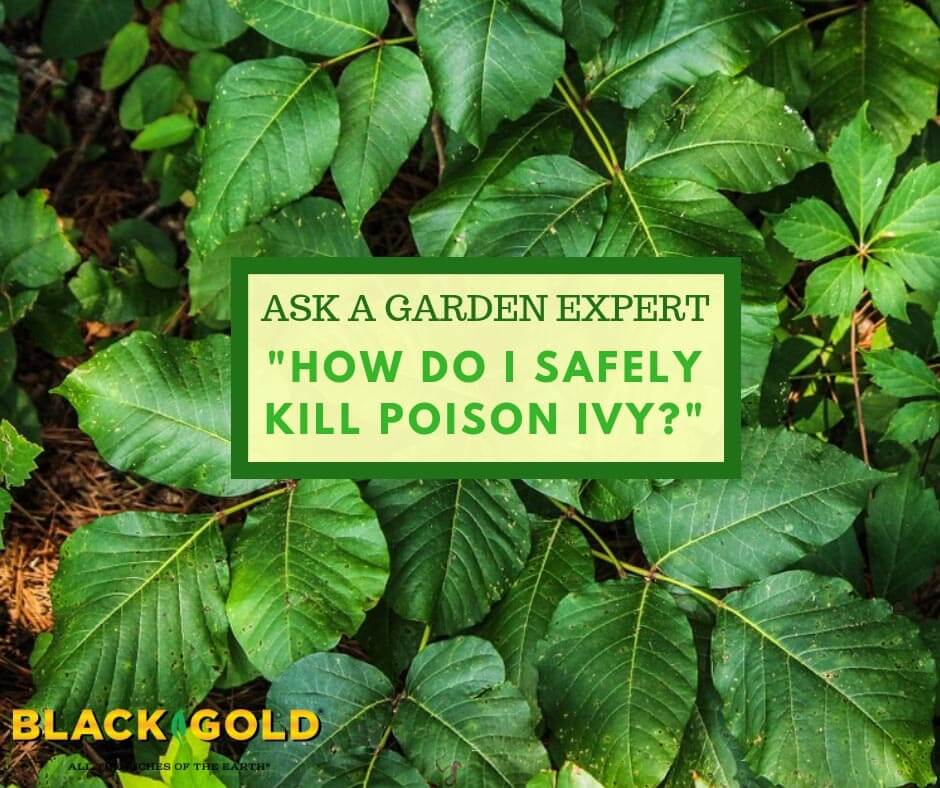
“What’s the best way to kill poison ivy?” -Question from Grace of Raleigh, North Carolina
Answer: It’s the age old question. The best method depends on your infestation–do you have lots of seedlings, a big vine or shrub, or all of the above? Either way, there are several consistent “dos” and “don’ts” when it comes to effective poison ivy removal. The important thing to remember is that you can get a poison ivy rash from any “dead” portion of the plant, whether it be brown leaves or an old stem or vine. The toxic oil (urushiol) that causes the rash is stable and will remain toxic for years, even on old, dead plants. For this reason, I rely on mechanical removal because it’s the safest method if you do it right. A herbicide-sprayed plant can still cause a rash and is still dangerous!
Removing Poison Ivy
Here’s my removal method: Wear thick long pants, a long thick shirt that covers your wrists and body, and wear thick rubber gloves. The tools you will need will depend on the size of your plants. But, generally, I use a sharp spade, trowel, pruners or loppers, and plastic bags for effective removal.
The key is removing the whole plant and root system. For smaller plants, I simply cut the root base with a spade, cover the plant/s with the plastic bag, and pull the plants within the bag without touching them. For lots of smaller plants, I do the same with a trowel and plastic bag. For vines growing up trees, I cut the base of the vine with pruners or loppers, remove as much of the vine from the tree as possible by cutting, not pulling (you don’t want a poison ivy vine toppling down on you!). Then I dig out the roots with a spade and put the pieces in a large plastic bag. (Once again, it’s best if you surround the plant with the bag and pick it up that way.) Then I dispose of the poison ivy pieces in the trash.
During this process, take note of everything that may have become contaminated with poison ivy oil: your tools, clothes, gloves, trashcan lid, door handle, etc. These will need to be cleaned.
It also pays to scout out any large vines that may be fruiting nearby. Birds are immune to urushiol, so they eat the fruits and spread the seeds. Simply cutting vines at the base can stop this year’s fruits.
Cleaning Up After Poison Ivy
Here’s my cleanup method: Change your gloves and wash all tools and surfaces that may have been contaminated with a coarse cloth and soap. Degreaser can be very effective. Next, remove all possibly contaminated clothing and washcloths and put them in the washer, choosing a long, hot water cycle and plenty of detergent. Finally, wash your hands and body with strong soap and a textured washcloth, using lots of friction. The combination of friction and good, strong soap will remove all the oil from your skin. (I usually wash twice!) Technu soap is specially made to remove poison ivy oil. [Here’s further information about rash prevention from the USDA.]
Here are two important poison ivy “don’ts”: Never compost poison ivy because its oils can contaminate your compost. Never burn poison ivy, because its toxic oils become airborne, causing a rash on the skin and in the lungs.
Mowing and chemical sprays can cut poison ivy back, but they will not remove it, or its dangers, completely. Take the time to carefully remove your plants, and your yard will be poison ivy free in no time.

